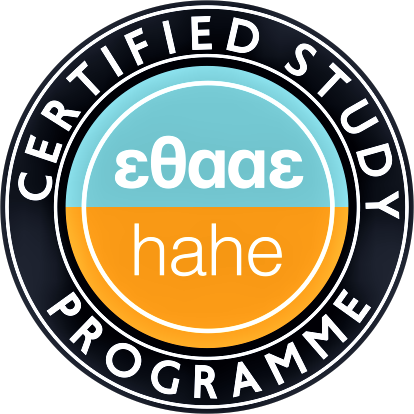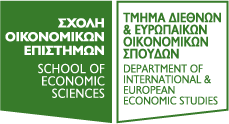Mathematics I
Number of credits allocated: 6 ECTS Credits
Objective of the course (expected learning outcomes and competences to be acquired)
The purpose of the course is to introduce students to mathematical concepts that have applications in economics and in general in social sciences. The material contains Analysis and Linear Algebra. Particular emphasis is placed on the theory of Matrices. Also, non-Euclidean vector spaces are examined. The lesson is necessary for any further math lesson. Upon successful completion of the course the students will be able to:
- solve systems of linear equations with the help of matrices,
- to find limits, partial and total derivatives of functions,
- to analyze functions, of one and several variables, employin limits and derivatives,
- to employ the properties of matrices and derivatives to solve applied problems in economics and econometrics
- to employ the definition of vector space to determine if a set is a vector space or not,
- to determine if a subset is a subspace,
- to determine if a set of vectors is a base of the vector space,
- to find the dimension of a vector subspace,
- to find the coordinates of a vector with respect of one base and perform a change of base.
Prerequisites: None
Course contents
The following areas are covered:
- Introduction to Linear Algebra- vectors, matrices, linear systems, economic applications.
- Introduction to Vector Spaces - Subspaces, Bases and Dimensions, Coordinates, Spaces with Inner Products.
- Relations and Functions –one and many variables.
- Derivatives of Real Functions of one variable, Economic Applications.
- Real Functions of many variables. Partial and Total Derivatives.
- Optimization of Real Functions of one and many variables.
- Constrained Optimization, with one and several constrains.
- Comparative Static Analysis-Economic Applications.
Recommended reading
- Xepapadeas A.‘Methods of Mathematical Economics’.
- Lorentziadis and Bourlakis ‘Applied Mathematics of Administrative and Economics Sciences’.
- Notes on Vector Spaces: www.aueb.gr/users/demos/vectors.pdf. (in English).
- Chiang ‘Fundamental Methods of Mathematical Economics’ (in Greek or English).
- Magnus and Neudecker ‘Matrix Differential Calculus (in English).
Teaching methods: 52 hours lectures, 20 hours classes.
Assessment methods: Written exam.
Language of instruction: Greek





